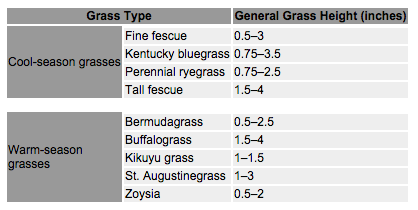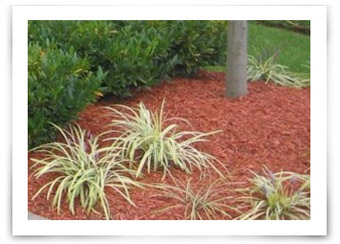How to Grow Grass in Rocky Soil
Growing grass may sound easy, but there are few critical things that must be in place for a healthy lawn to germinate and flourish. Many of us have tough soil to work with, especially when establishing a lawn near a new home where the top soil may be thin, rocky, filled with clay, or non-existent. The good news is that with the proper care, you can develop your soil to sustain a great lawn.

You may be able to see results as soon as the first year or it may take a few years to fully develop your lawn, but a beautiful, green, grassy expanse will feel well worth the work, and sooner than later, you'll be mowing the grass of your previously barren yard.
1. Loosen the soil
You don't need to till the soil deeply, but you do need enough of the soil to be loosened to allow seed to evenly germinate and absorb water. If the dirt is dry this will be much more difficult than if it has some moisture—an ideal time is early fall. Small areas can be done with an iron rake. Larger areas can be loosened to various levels from simply an aerating to fully tilling. Remove any large or exposed rocks with a rake, extracting as many as you can.
2. Build your soil
Building your lawn will go a lot faster if you bring in a lot of top soil or compost . If you are on a budget and are willing to wait more than one season, you can focus on building the soil by supplementing the right nutrients. A light application of compost or Milorganite can be just enough to get a healthy lawn started, especially if you have the diligence to carefully monitor the moisture level of your soil.
3. Plant Your Grass Seed
Using the correct species of grass is critical to your region. Do your research, speak with a local professional, or ask someone on your street with a great lawn what they used. Don't fall for the trap of buying what's on sale in the mass retailer stores or the claims on the package—that can put all your hard work to waste. A shade grass in Georgia is different than a shade grass in Maine. The ideal time to seed is early fall—grass tends to grow roots in the fall and leaves in the spring—your lawn will have a healthier start in the fall. Follow the application rate on the package. It can be tempting apply too much seed which will cause grass to grow in clumps. Be sure to cover the seed—this will greatly increase your germination rate and keep the sun off the bare soil as the seed takes root—this is often one of the most overlooked but essential elements to getting your grass to take root.
4. Water
Water regularly, especially if you have poor soil. Those young plants depend on the water to grow and access the nutrients in your new soil. Watering in the evening or early morning will give the water a greater chance to soak in rather than evaporating. Once the grass gets to 4-5" tall and the grass begins to form flat blades rather than the thin shoots you will know that your infant lawn has established itself. Cut the lawn regularly and at the maximum height recommended for your species. The longer the blades of grass, the deeper the roots will grow and develop greater drought resistance. You also don't want to cut too much off at once—if you cut more than 1/3 of the blade of grass it will stress the plant.
With some work and patience you can achieve a beautiful lawn and contribute towards caring for our environment. Your lawn helps keep the earth from heating/radiating heat (urban islands), filters and absorbs water that will gently feed streams and springs with fresh water, capture dust and pollution, create oxygen, sequester more carbon than the fuel used to cut it, and create habitat for many small critters that are essential to the ecological balance of the earth.


